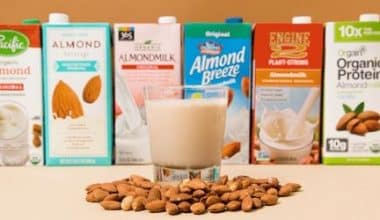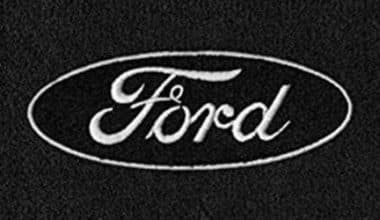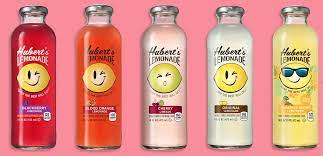Ginger ale, which was invented in the 1850s by an Irish apothecary and surgeon named Thomas Joseph Cantrell, has come a long way since its humble beginnings as a sweet, dark-colored brew. Throughout history, the carbonated beverage has been used to treat upset stomachs, sore throats, and hangovers. Even if you don’t agree that ginger ale is good for you, you can’t deny that it tastes good and makes you feel good. This article features the best spicy and natural ginger ale brands worth trying out.
Top Ginger Ale Brands Worth Trying
#1. Canada Dry
This century-old ginger ale brand makes the top of our list of ginger ale brands. It is well-known and a favorite for many. Everyone remembers gulping a Canada Dry, with its sweet, exquisitely balanced flavor rush that coats the back of your throat and covers your tongue in tiny pin-prick bubbles. Canada Dry was introduced in 1904 and quickly became a favorite mixer during Prohibition. The official website often refers to it as the champagne of sodas.
#2. Fever-Tree
These days, Fever-Tree appears to be the carbonated mixer of choice for mixologists. Its ginger ale is delicious. It’s almost golden in color and just as syrupy as the original brands, but with a new-age ginger kick. To produce its astonishingly complex taste, the business claims to utilize a “special blend of three of the world’s finest naturally obtained gingers”—ginger from India, ginger from the Ivory Coast, and another from Nigeria—and spring water. It’s no surprise that Fever-Tree pairs well with so many drinks. It has a distinct flavor that is enjoyable on its own, but it isn’t too powerful or gingery to overpower a fine whiskey or rum.
#3. Schweppes
Schweppes, like Canada Dry and Seagrams, is a crown jewel of the carbonated ginger beverage kingdom and one of Coca-Cola Great Britain’s oldest products. Though the hue is nearly identical to Canada Dry, Schweppes is a little less fizzy and has a more muted flavor. A crisp, old-school ginger ale like Schweppes, on the other hand, truly hits the spot for a growling tummy or that one night of the week when you’re skipping the beers. One amusing fact about Schweppes: During the Mad Men era of advertising, the company created its own make-believe county known as “Schweppshire,” complete with its own coat of arms and language, and was featured in a multi-decade advertising campaign. There was also “Schweppsylvania” and the catchphrase “What you need is Schwepperverscence.” God, the 1950s seem nuts.
#4. Blue Sky
Blue Sky, which is based in New Mexico, has been in business since 1971, emphasizing “genuine” and “authentic” flavors. The ginger kick is really potent. Though it’s probably not something you’d want to drink if you’ve just had the stomach virus, Blue Sky is a refreshing beverage. The drink leaves a refreshing, distinct aftertaste in your throat that is just distinct enough to have you coming back for more.
#5. Seagrams
You can’t discuss ginger ale without mentioning Seagrams. The bold-tasting bubbly drink has a familiarity factor that puts it on par with its vintage counterparts. Schweppes, Canada Dry, and Seagrams are indisputably the Big Three of the traditional ginger ale era, but Seagrams is unique in that the business also produces something that pairs nicely with ginger ale: whiskey! Though it’s definitely more fun to order a “7 and 7”, Seagrams 7 Crown whiskey complements the ginger-infused counterpart perfectly. If you’re a boozer looking to relax for the evening, make Seagrams your ginger ale of choice; you’ve been sipping the brand’s whiskey for years at bars, business meetings, and far too many family holiday parties to count.
#6. Polar
Despite being a legacy brand, this supermarket staple is not as well-known as the other old-school ginger ales. Polar, an American soft drink manufacturer that has been brewing bubbles in New England since 1882, boasts a well-balanced ginger ale. It tastes like Canada Dry, but it fizzes in your throat, delivering that delightful carbonation directly up your sinuses and into your nose. You can find Polar’s familiar one-liter bottle in the seltzer aisle. Polar manufactures a variety of sodas, fizzy waters, and soft drinks, and I’m not sure if it’s because of marketing or a lack of popular advertising, but I nearly always choose Polar seltzers over Polar ginger ale. Maybe I should reconsider. Its ginger ale is actually rather tasty.
#7. Reed’s
Reed’s is a newer brand with a Jamaican-inspired flavor. The company, which has been in business since 1987, claims to have “revived a centuries-old formula for ginger beer,” and that is precisely what it is best known for—ginger beer, not ginger ale. But, as a leading supplier of ginger beverages, sweets, and other ginger-related treats, I had to test their version of the ginger ale recipe. This ginger ale has a weird flavor that is perhaps the most unique of the entire pack and comes in a bright green twist-off bottle with the words “All Natural Jamaican Style” emblazoned immediately above the logo. It’s twangy and dark, with a distinct ginger beer flavor, and it’s so near to its Jamaican roots that you have to wonder: If you’re going to wander this far from ginger ale, why not just drink a ginger beer?
#8. Bruce Cost Unfiltered
The ginger ale of choice for Brooklyn’s pricey bagel shops and gentrified coffee shops appears to be Bruce Cost. It bills itself as “unfiltered” and “made with fresh ginger and organic cane sugar,” even going so far as to say right on the label that it is a “proud descendant of the original soft drink,” whatever that means. The ingredient list boldly proclaims the simplicity of its recipe: carbonated water, organic cane sugar, 100 percent fresh ginger, and citric acid.
#9. Brooklyn Crafted
Last but not least on our list of top ginger ale brands is Brooklyn Crafted, an artisanal, glass-bottle ginger ale with variations such as Sugar-Free, Extra Spicy, Lemon Lime, and even Mango. Manufactured and distributed by Brooklyn Food & Beverage, this ginger ale has a super sweet taste and off-white color.
Natural Ginger Ale Brands
If you want a nice ginger ale to settle your stomach, minimize motion sickness, or give the other health advantages of ginger, you should usually go for one that contains actual ginger.
But does any of these brands contain natural ginger, or it’s just the flavor? Read on
Most ginger ales have at least a trace of ginger; however, the most popular brands available in supermarkets contain so little ginger that they may as well not contain any ginger at all.
Most typical ginger ales produced by the main bottling brands don’t have ginger stated on the ingredients list (or it’s classified as “Ginger with Other Natural Ingredients”), which indicates the ale only includes a small amount of ginger extract, which is insufficient to reap the advantages of ginger.
There are some ale brands that include a large quantity of natural ginger in them, so let’s talk about which ones do and don’t.
#1. Canada Dry
Canada Dry is undoubtedly one of the first names that come to mind when you think about ginger ale. Once upon a time, Canada Dry may or may not have had a good bit of ginger in it, but that no longer appears to be the case.
According to the information available today, Canada Dry contains very little natural ginger, possibly as little as 2 parts per million, according to information presented in a lawsuit. Just because it was alleged in a lawsuit doesn’t mean it’s true, but the evidence suggests that Canada Dry is not a brand you should reach for if having a lot of ginger in your drink is important to you.
#2. Reed’s Ginger Ale
Reed’s Ginger Ale is prepared with real ginger, and if you choose the ginger beer, it may have the most ginger of any drink on this list.
If you want the taste and benefits of ginger, this may be the best option on the list, if you can get it. The ginger beers on this list have a lot more ginger in them than the ale (none of them have any alcohol), so they’re the better option to go with if you want ginger.
#3. Vernors Ginger Ale
Vernors Ginger Ale contains very little, if any, actual ginger; ginger is not listed as an ingredient on the label, thus there is most likely only a little amount of ginger extract hidden in the “natural ingredients” section of the ingredients list.
While it most likely contains some ginger, there is no proof that it contains enough ginger to provide any of the advantages associated with ginger use; if this is important to you, you should definitely choose one of the other drinks on this list.
#4. Schweppes
Schweppes, like Canada Dry and Vernors, does not identify ginger as an ingredient, but they do note on their website that their ginger ale contains real ginger, so it’s most likely just a ginger extract buried under “natural flavors.”
They appear to employ the same fundamental components as Canada Dry and Vernor’s, which are a blend of ginger extract and citrus oils, so it’s conceivable they’re just utilizing different permutations of the same “natural flavors” to give each drink a little distinct taste.
#5. Seagram’s Ginger Ale
Seagrams Ginger Ale is listed as being made with real ginger (on some packages), and its ingredients list includes “Ginger Extract with Other Natural Flavors,” but it’s not clear how this is materially different from any of the other ginger sodas on the list (excluding reeds) that only include a small amount of ginger extract that isn’t enough to get any of the benefits of ginger.
#6. Buffalo Rock Ginger Ale
Pepsi-owned Buffalo Rock Ginger Ale, like many of the other ginger sodas on this list, is unclear whether there is any actual ginger in this drink; if there is, it is most likely a small amount of ginger extract hidden under natural flavors.
#7. Blue Sky Ginger Ale
Blue Sky Ginger Ale is another ginger ‘ale’ that makes it unclear how much genuine ginger is in the soda; I don’t find any statements that there is any real ginger in this soda, but it is likely that they use the same ginger extract as the other sodas, so there is at least some real ginger in this drink.
If you’re starting to feel down about ginger ales no longer having ginger as one of its key components, the following items should give you some optimism.
#8. Brooklyn Crafted Classic Ginger Ale
The Brooklyn Crafted is one of the few ginger ale brands that include natural ginger.
While it’s unclear how much ginger is in this drink, it obviously contains natural ginger, as mentioned on the ingredients list, and one of their selling points is that it’s unfiltered, so you can see the ginger in the drink.
Their regular ginger ale only has four ingredients, which is a great variation from the usual ginger sodas available, and their extra spicy variant includes ginger extract in addition to the ginger in the regular one.
They advertise (on certain websites) that there is “one unfiltered ginger shot” in every bottle, however it’s unclear how much ginger went into the ginger shot; based on the fact that it’s mentioned before Citric Acid as an ingredient, it’s likely to have at least 1.3 grams – possibly quite a bit more.
#9. Bruce Cost Ginger Ale
Bruce Cost Ginger Ale is another alternative for those of us who aren’t satisfied with only ginger extract in a drink that claims to be ginger-based; Bruce Cost uses genuine ginger in their drink and specifies it in their ingredients list.
Their ginger ale, like Brooklyn Crafted, has only four ingredients, and they claim that the distinction between their ale and their beer (neither contains alcohol) is that the beer contains ginger extract in addition to the regular ginger.
#10. Cape Cod Ginger Ale
Cape Cod Ginger Ale is a 5-component ginger ale that is unapologetically produced with real ginger and isn’t afraid to admit it. Unlike practically every other ginger ale on our list, ginger is actually the second ingredient (behind water).
Because of this, while they don’t specify how much ginger is in each bottle, it’s safe to assume it’s more than 14 grams, which we know because the drink contains just 14 grams of sugar (far less than the other non-diet options), and sugar is the third component on the list.
#11. Iced Ginger Ale
Polar ginger ale is another ale that boasts “natural ginger” on the top of the bottle, but, like some of the other mass-market ginger drinks on our list, ginger isn’t on the ingredients list.
This most likely means that they’re using ginger extract and that there isn’t a lot of ginger in the drink (at least not enough to receive health benefits from). That doesn’t mean it’s a bad drink, simply that there are better options if you’re concerned about ginger content.
#12. Fever-Tree Ginger Ale
Fever-Tree Ginger Ale is another ale on the list that utilizes actual ginger – at least in part – however, the amount of ginger in the drink is unknown.
Based on the usual amount of citric acid in soda, we may assume that there is probably less than 1.3 grams of ginger, and possibly much less, but there is no way to know for sure because the manufacturer does not offer the information.
Which Contains More Ginger Between Ginger Ales and Beers?
Ginger beers have more ginger in them than ales, in some cases up to 19x more ginger. Neither ales nor beers include alcohol from the bottle; the only variation is the amount of ginger and the amount of extract or other spices in the drink.
That example, ginger beer often has a stronger flavor than conventional ginger ale.
Which Has Real Ginger, Schweppes, or Canada Dry?
Unlike Schweppes, Canada Dry contains a significant amount of real ginger.
Spicy Ginger Ale Brands
Want something spicy? These spicy ginger ale brands are a go-to.
#1. Blenheim Red Cap Ginger Ale.
With its ability to produce a Class A conflagration in your mouth, Blenheim Red Cap Ginger Ale easily blows other ginger sodas out of the water, as well as debunks the myth that ginger ales are inherently less spicy than ginger brews.
#2. Diet Gosling’s Ginger Beer.
Something about the lack of real sweeteners must highlight the ginger elements of this brew and make its “zip” a shade better than the original version.
#3. Old Jamaica Ginger Beer.
The medium spice and heavy carbonation in this beer make it an ideal mixer for a Dark and Stormy cocktail and can compensate for the drawbacks of using lesser rums.
#4. Reed’s Extra Ginger Brew.
The “extra ginger” in this Reed’s variety increases the mouth-burn, but a substantial amount of sugar keeps this ale from being too caustic. There’s no better drink for settling an unsettled stomach and chasing away bacteria.
#5. Vernor’s Ginger Ale.
This ginger ale has something of a cult following among Wolverine-state ex-pats. This spirited soda deftly manages to combine a sweet creaminess with some subtle spice notes, making it the perfect not-so-hot ginger ale for those with a lower tolerance for heat.
Which Ginger Ale Is A Pepsi Product?
Schweppes ginger ale is a Pepsi product.
If at this point, you’re not yet sure of what ginger ale is, or its benefits, we’ll put you through everything you need to know about ginger ales in the coming section.
What is Ginger Ale?
Ginger ale is a carbonated beverage flavored with the spice ginger that is commonly consumed on its own but is also occasionally used in mixed cocktail recipes.
Most commercial ginger ale is classified as soda by manufacturers, who make ginger ale by combining carbonated water, sugar or high fructose corn syrup, and either natural or artificial ginger flavoring.
Ginger ale frequently contains preservatives such as citric acid and sodium benzoate, as well as the color caramel.
Some brands include extra components in their “natural flavoring,” which are proprietary blends, which means the producers keep them hidden.
A more conventional kind of ginger ale, produced with either yeast or ginger bug as a microbial starter culture, is available in select stores and online.
The ginger bug, which is obtained from either the ginger beer plant or fresh ginger root, is comparable to the SCOBY, or starter culture, used to make sourdough bread or kombucha. As it ferments, beneficial bacteria and yeasts proliferate and provide natural carbonation.
Traditional ginger ale also contains more natural components, such as cane sugar, fresh ginger root, and water, and does not contain artificial colors.
Ginger Ale Varieties
Ginger ale comes in a variety of flavors.
The following are some of the most common types of ginger ale:
#1. Regular.
This category comprises sodas and the above-mentioned classic ginger ales, which contain ginger, sugar or high fructose corn syrup, and carbonation, as well as other components depending on the brand.
#2. Dry
Dry appears to be a marketing phrase used by marketers to characterize ginger ales with a hotter, “drier” ginger flavor as a result of how manufacturers procure and process the ginger root.
#3. Diet
Diet ginger ale uses artificial or calorie-free sweeteners in place of sugar.
The greatest ginger ale for you is determined by your own taste and ingredient preferences.
Are There Any Benefits of Drinking Ginger Ale?
While ginger ale is not a health food, it may provide some benefits if made with actual ginger root.
Powdered ginger root is sold as a dried spice for cooking, but it is also the major flavoring element in ginger ale.
According to research, ginger may provide the following health benefits – but these effects relate to ginger in general, not ginger ale in particular.
#1. It could assist with nausea.
Ginger may help reduce nausea and upset stomach caused by a stomach virus, severe headaches, chemotherapy, or morning sickness during pregnancy.
This could be due to natural components contained in ginger, such as gingerols and shogaols, however, most studies on the benefits of ginger on nausea have utilized large dosages of the ginger extract rather than ginger ale.
#2. Antioxidant properties may be present.
Although ginger oil is a natural source of antioxidants, which are molecules that protect cells from damage that can lead to disease, its antioxidant concentration diminishes with processing.
#3. Migraines may benefit from this treatment.
A 250-mg dose of ginger powder supplement was found to be as beneficial as prescription medicine in lowering migraine symptoms in one trial, while ginger put under the tongue was also effective in another.
#4. It may reduce Inflammation
Ginger has anti-inflammatory chemicals that may benefit the brain and joints.
#5. May benefit heart health
Ginger helps decrease blood pressure, which is a risk factor for heart disease and stroke.
#6. Caffeine-free by nature
Because ginger ale is inherently caffeine-free, it may be a good substitute for cola or other caffeinated beverages.
Possible Adverse Effects Of Drinking Ginger Ale
In general, most people can take ginger ale in moderation. However, you should be aware of the following potential negative effects.
#1. Gassiness
Ginger ale consumption may result in bloating, burping, and increased gassiness. These effects are caused by carbonation and are typical of any carbonated beverage.
Diet ginger ale contains artificial sweeteners, which could be sugar alcohols. These calorie-free sweeteners might cause bloating or diarrhea if consumed in high quantities.
#2. The health consequences of additional sugar
The most unhealthy aspect of ginger ale, according to most people, is the added sugar.
Many studies have found that eating a lot of added sugar can lead to weight gain and chronic disease.
According to research, those who regularly consume sugar-sweetened beverages, especially soda, have higher body weights and more visceral fat than those who do not.
Sugar consumption has also been linked to the development of dental cavities, cardiovascular disease, obesity, type 2 diabetes, and other chronic health disorders, according to research.
It is crucial to highlight that sugars found naturally in foods such as fruits and dairy products do not have these negative effects.
The Dietary Guidelines for Americans recommend that you limit your added sugar consumption to less than 200 calories per day for a 2,000-calorie diet.
A 12-ounce (360-mL) can of ginger ale has 36 grams of added sugar or 72% of the Daily Value (DV) based on a 2,000-calorie diet.
Many different names for added sugar can appear on ingredient lists, such as organic cane sugar, agave nectar, and honey.
Check ingredient labels and drink sugar-sweetened ginger ale in moderation to keep your sugar intake within the recommended level.
#3. Sweeteners that are artificial or nonnutritive
According to two recent studies, nonnutritive sweeteners may cause metabolic problems. According to one review, they disrupt the balance of beneficial gut flora in healthy persons, resulting in metabolic abnormalities that can contribute to type 2 diabetes and obesity.
In addition, according to one observational study, those who drank diet soft drinks were more likely to have metabolic syndrome than those who drank sugar-sweetened soft drinks or no soft drinks at all.
Those who drank diet drinks had greater waist circumferences and higher fasting blood sugar levels.
However, researchers have stated that the effects of nonnutritive sweeteners on gut microbes and metabolism are still debatable and that further research is needed.
Potential culprits include the nonnutritive sweeteners acesulfame-potassium (Ace-K), aspartame, neotame, saccharin, sucralose, and stevia. All of these have been allowed by the FDA for use in food in the United States, thus you might find them in diet ginger ale.
Another recent study included 56 studies on the impact of nonnutritive sweeteners. Overall, the researchers discovered no difference in health outcomes between persons who ingested nonnutritive sweeteners and those who did not.
The researchers did, however, state that many of the papers they examined were of poorer quality. They urged that scientists conduct further research on the health effects of nonnutritive sweeteners.
As we can see, research on the health impacts of nonnutritive sweeteners is conflicting.
Aspartame is a nonnutritive sweetener in diet ginger ale that may have some negative effects, although research results are inconsistent, and more research is needed to investigate its possible impacts.
#4. Interactions with blood thinners are possible.
According to one study, drinking a lot of ginger over a lengthy period of time may raise the risk of bleeding. If you take blood-thinning drugs, eating a lot of ginger could be dangerous.
Otherwise, ginger ale is a low-risk beverage for the ordinary individual and can fit into an overall balanced diet when eaten in moderation.
Ginger Ale vs. Ginger
The majority of the health advantages here relates to ginger, not ginger ale in particular.
Despite the health advantages of ginger, ginger ale is classified as a soft drink or soda and hence is not a health food.
If you choose to drink ginger ale, do it in moderation as part of a healthy diet. Many commercial ginger ale products contain artificial ginger flavoring, as well as very little ginger and a lot of added sugar.
What is the difference between ginger ale and ginger beer?
Ginger ale is a carbonated soft drink made with ginger flavor and sweeteners, while ginger beer is a fermented beverage made with ginger root, yeast, and sugar. Ginger beer has a stronger ginger flavor and is less sweet than ginger ale.
What are the ingredients in ginger ale?
The ingredients in ginger ale typically include carbonated water, high fructose corn syrup or sugar, ginger flavor, citric acid, and preservatives. Some ginger ale brands may also include natural flavors and sweeteners.
How is ginger ale made?
Ginger ale is made by mixing ginger flavor, sweeteners, and other ingredients, then carbonating the mixture. The specific ingredients and methods vary by brand.
What are the nutritional values of ginger ale?
The nutritional values of ginger ale vary by brand, but they typically contain high levels of sugar and calories. Some brands may contain natural sweeteners and lower calorie options.
How long does ginger ale last?
Ginger ale typically lasts for 2-3 months after the expiration date if stored in a cool and dry place. Once opened, it should be consumed within 1-2 days.
Can ginger ale be used in cooking and baking?
Yes, ginger ale can be used in cooking and baking to add a hint of ginger flavor to various dishes and desserts.
What is the history of ginger ale?
The history of ginger ale is believed to have originated in Ireland in the 19th century and became popular in the United States in the early 20th century. Today, ginger ale is a popular carbonated soft drink consumed worldwide.
In Conclusion
From what you have read so far, you have seen that only a few ginger ale brands actually include natural ginger in their drinks. Nevertheless, ginger ale is an awesome drink, and the options of ginger ale brands are a real go-to.
Related Articles
- Lemonade Brands: Best 13+ Hard/Alcohol Brands & All You Need to Know
- IRISH BEER BRANDS: Best 13+ Non-Guinness Irish Beer Brands in America
- Dry Cleaning Business: How to Successfully Run One (+ quick guide)
- CANADIAN BEER BRANDS: 20 Best, Old and Cheap Brands in 2023 (Updated)
- HOW TO GET A LOAN WITHOUT A JOB: Alternatives for People Without Jobs






